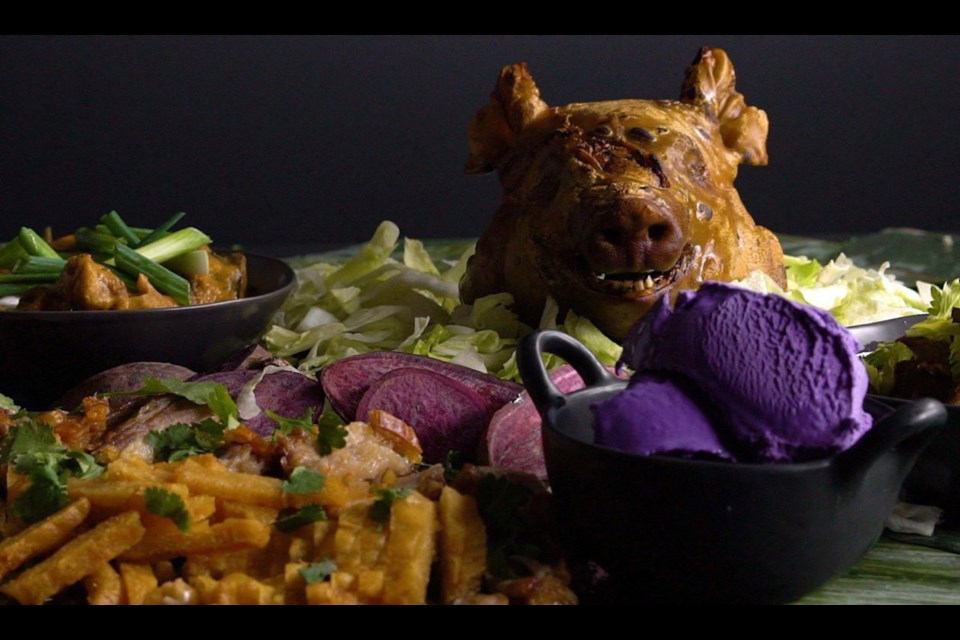TORONTO — Filipino food, fancy fizzes, twists on traditional Jewish mainstays and artisanal jerky are a few trends that foodie insiders are seeing in their culinary crystal balls for 2017.
Filipino fare includes adobo — one of the island nation’s traditional dishes, not to be confused with the sauce used in the canning of chipotle peppers — which is made with chicken, garlic, vinegar, soy sauce and black pepper.
Amanda Riva, CEO of food marketing agency THP, says Filipino restaurants often feature ube, the beautiful purple yam becoming more available in stores in this country, along with grilled items, stews and noodle and rice dishes. Commonly used ingredients also include okra, cabbage and cassava.
“In restaurants here, you do find some recipes using goat — usually they’ll have one signature one — but otherwise, a lot of the recipes that I’m seeing at this point are still heavily rooted in fish, chicken and pork,” said Riva, whose team develops more than 2,500 recipes a year for consumer and retail brands as well as food-service companies.
Christine Couvelier’s prediction for dish of the year is “waffling.” It’s a push beyond sweet waffles with bacon or chicken.
“Imagine taking leftover stuffing from your holiday turkey and putting it on your waffle machine. You could then serve it with gravy and mashed potatoes and turkey or chicken. You can take hash browns and ‘waffle’ them,” she says, adding french toast, grilled cheese and vegetables can all be waffled.
As for drinks, both trend watchers note mixologists are elevating non-alcoholic mocktails by pairing carbonated beverages with flavours ranging from juniper berry kaffir limeade to serrano chili with fresh flavours such as pineapple, blood orange and lavender. They’re also using cold-pressed juices, flavoured teas, herbs, spices and sweeteners such as the very Canadian maple or birch syrup with its earthy smokiness.
“I wouldn’t put birch syrup on pancakes or french toast, but I would cook with birch syrup and certainly in a mocktail it’s a wonderful sweetener without being really sweet, but adding a lot of flavour,” Couvelier said.
The Victoria-based consultant, whose Culinary Concierge company keeps clients ahead of market trends, sees sommeliers guiding imbibers into the intricacies of water and cider.
Yes, water. And it’s not flavoured or a choice between sparkling or still.
“The first water sommelier in the U.S. is in L.A. with a group of restaurants to really help people appreciate the waters that are out there. There’s a German water trade association that trains people as water specialists,” Couvelier said.
Chefs are also experimenting with twists on Jewish food, such as matzo ball ramen soup topped with lox. Shakshuka, a dish of eggs poached in a sauce of tomatoes, chili peppers and onions, is finding its way onto brunch menus across Canada.
Anthony Rose at the restaurant Fat Pasha in Toronto serves latkes fried in duck fat with beet root gravlax and upscale chopped liver. At Bar Reyna in the city’s Yorkville district, olives are stuffed with shakshuka and fried.
Couvelier thinks veggies might be bigger than ever in 2017 thanks to vegetable butchers in stores such as YamChops and Pusateri’s in Toronto.
“They’re providing people with vegetable knowledge … how to cook, how to carve, how to taste, how to appreciate your vegetables,” she says.
Vegetable charcuterie platters, rice made from cauliflower, pulse pastas and packaged slaw made from broccoli stems rather than cabbage are continuing to emerge.
And companies are stepping up to the plate with innovations around ugly fruits and vegetables to reduce waste.
Misfit Juicery in Washington, D.C., uses imperfect produce in cold-pressed juices, while New York’s Sir Kensington’s uses aquafaba, the liquid drained from cans of chickpeas, to make vegan mayonnaise. The liquid performs like an egg white and can be whipped until stiff for baking, Couvelier said.
Meanwhile, expect a whole new level of conspicuous consumption in 2017 with extravagant milkshakes oozing with fat and sugar and more over-the-top burgers.
“Burgers continue to be the thing that people love to revolutionize,” says Riva, adding one she saw recently had six patties, cheese, fois gras, caramel corn, caramel drizzle and seared ahi tuna.
Other food trends we might see next year:
• Kelp is the new kale, Couvelier says. “I think kale has had its day. It’s still going to be around, but kelp is so healthy, there’s so many varieties, it’s high in umami.”
• Jerky is increasingly going artisanal with flavours such as sesame chicken and teriyaki beef, says Riva.
• Poke bowls, the deconstructed sushi dish originating in Hawaii, will become more popular here, Couvelier said, with tropical spices, seasonings and flavour.
• Activated charcoal has moved from medicinal use to an ingredient, says Riva. “The cool thing about charcoal is that it doesn’t give a burnt or bitter taste to the food,” she says. “It adds a little bit of richness, accentuates the texture in, I think, a very interesting way.”
• Brilliant yellow turmeric, touted for its anti-inflammatory qualities, will become more mainstream in smoothies, juices, teas, salad dressing and bone broth, predicts Couvelier.
• Sumac, a reddish-purple powder that adds a tart lemony flavour to Mediterranean cooking, is popping up on more menus and in supermarket specialty aisles, says Riva.
• Cream, butter, ghee and rich flavourful sauces are in after years of non-fat and low-fat, Riva said.



